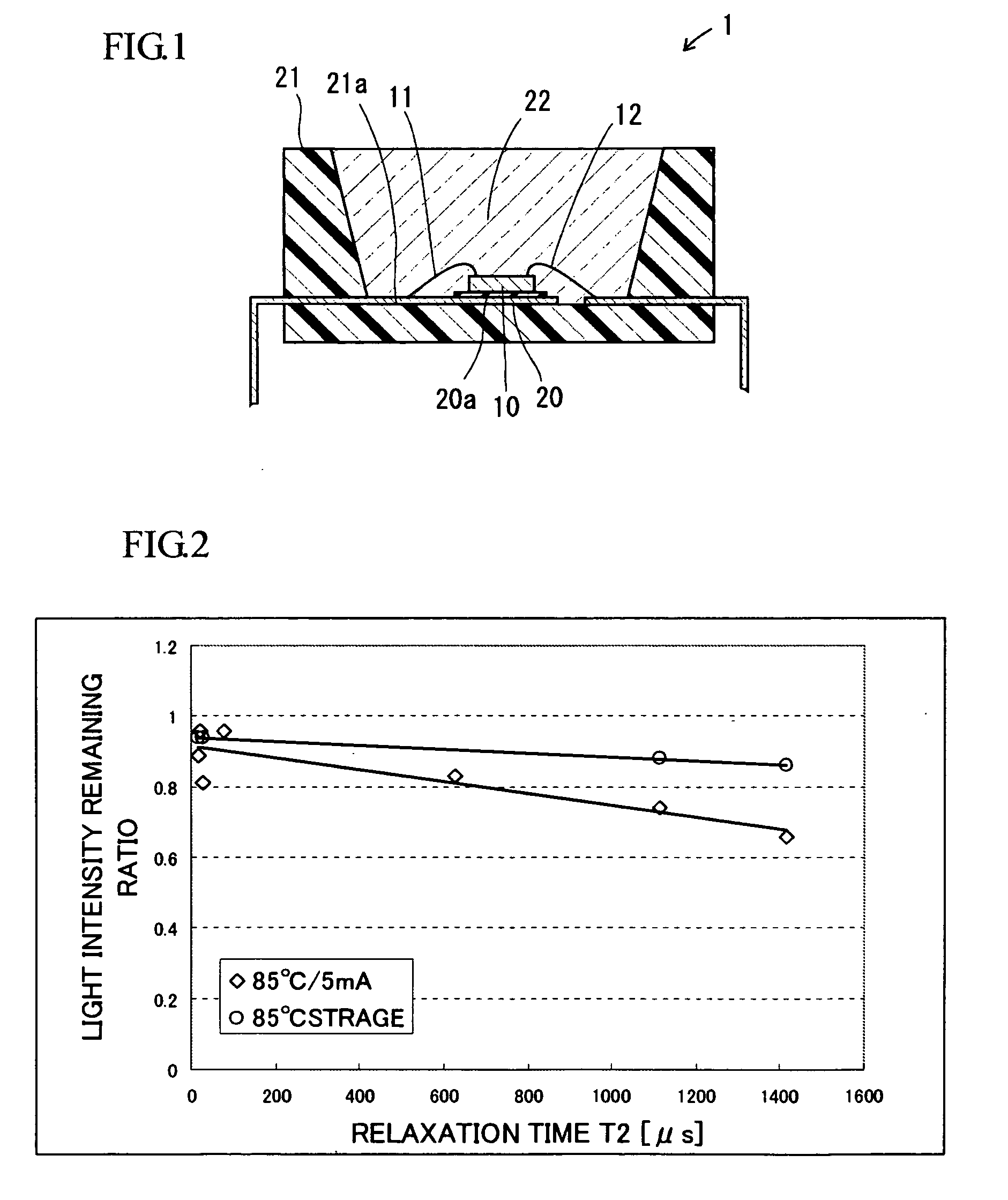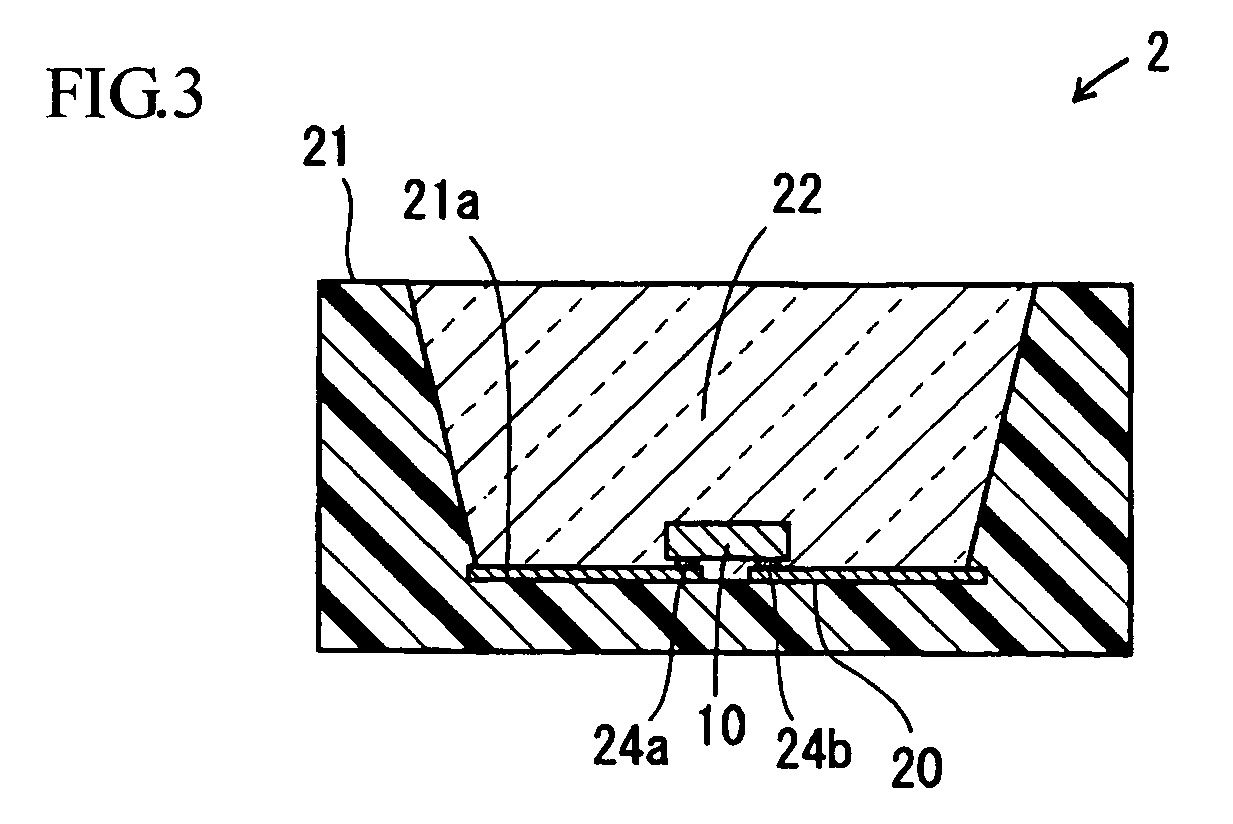Light emitting apparatus
a technology of light-emitting apparatus and light-emitting resin, which is applied in the direction of electrical apparatus, semiconductor devices, solid-state devices, etc., can solve the problems of reducing reflectivity and light intensity, corroding and discoloring the frame formed from copper or aluminum, and yellowing of epoxy resin
- Summary
- Abstract
- Description
- Claims
- Application Information
AI Technical Summary
Benefits of technology
Problems solved by technology
Method used
Image
Examples
Embodiment Construction
[0014]In the light-emitting apparatus of the invention, a light-emitting element is fixed to a lead frame. Also, at least a surface of the lead frame facing the light emitting element is formed from Ag, Cu, or Al as a major component. As examples of such lead frame, lead frames formed from copper, copper alloys such as brass or stainless steel as a base material which is silver plated can be cited. Also, A lead frame having a base plating like Cu plating under the silver plating. Additionally, as a lead frame without plating, lead frames formed from copper or copper alloy, or lead frames formed from Al or Al alloy can be cited. The surface of these lead frames tend to be discolored by the action of a sulfur based compound or a chlorine-based compound but, in the light-emitting apparatus of the invention, the discoloration of the lead frames can be effectively prevented over a long period of time.
[0015]Moreover, in the light-emitting apparatus of this embodiment, as the silicone resi...
PUM
| Property | Measurement | Unit |
|---|---|---|
| resonance frequency | aaaaa | aaaaa |
| spin-spin relaxation time | aaaaa | aaaaa |
| resonant frequency | aaaaa | aaaaa |
Abstract
Description
Claims
Application Information
 Login to View More
Login to View More - R&D
- Intellectual Property
- Life Sciences
- Materials
- Tech Scout
- Unparalleled Data Quality
- Higher Quality Content
- 60% Fewer Hallucinations
Browse by: Latest US Patents, China's latest patents, Technical Efficacy Thesaurus, Application Domain, Technology Topic, Popular Technical Reports.
© 2025 PatSnap. All rights reserved.Legal|Privacy policy|Modern Slavery Act Transparency Statement|Sitemap|About US| Contact US: help@patsnap.com



